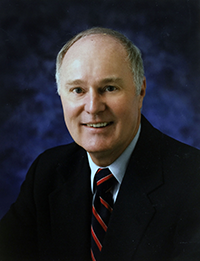Thomas S. Logsdon
was enshrined in 2016
was enshrined in 2016

Every aviator today who uses GPS technology has cause to thank Kentucky mathematician Tom Logsdon. In the late 1960s, Logsdon took paper and pencil to determine for Rockwell International the precise positioning, or constellations, of 24 satellites such that any point on earth could be simultaneously seen by four satellites, the base conditions to locate a moving object. Logsdon came from rural Springfield, Ky., to Eastern Kentucky University at the dawn of the Space Age.
In October 1957, he spent hours pondering the trajectory of the first Russian satellite, Sputnik, yearning to contribute his gifts in mathematics to what seemed like an impossible dream: flying a man to the moon. After graduating in 1959, he began working with McDonnell Douglas on orbital mechanics for transit navigational satellites, managing trajectory simulations and devising capsule recovery procedures for the 135-foot Echo balloon communication satellite. With a master's from the University of Kentucky, Logsdon joined Rockwell. Legions of NASA and defense aeronautics professionals are heirs to technologies advanced by Tom Logsdon's work in powered flight and trajectory simulations, rendezvous studies, mathematical derivations, and systems analysis for the Saturn V moon rocket, the manned Skylab, and Mars and asteroid missions. Aviation professionals depend on a steady flow of innovation and new technologies, but funding and advancing innovation require science communicators who can translate complex theories and systems for new publics. In Logsdon's second career as a science communicator, he has written 29 books, including a clear introduction to rocket science, and delivered more than 1,500 public and technical lectures. "Look up", where he tells the audience. to Imagine how far you could go, how fast, how safely, and how high.
